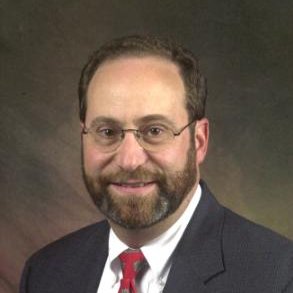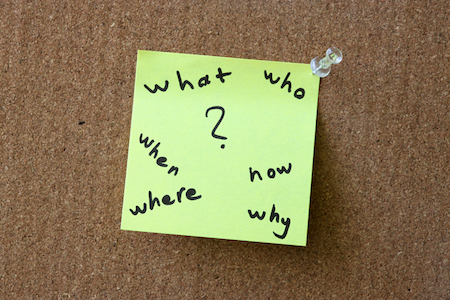In his role as Program Director, Stanley Dash works with subject matter experts, candidates, and the Association’s members to maintain and improve the curriculum, the test experience, and the value of the CMT certification. The Chartered Market Technician® (CMT) designation marks the highest education within the discipline and is the preeminent designation for practitioners of technical analysis worldwide.
and improve the curriculum, the test experience, and the value of the CMT certification. The Chartered Market Technician® (CMT) designation marks the highest education within the discipline and is the preeminent designation for practitioners of technical analysis worldwide.
UWorld, a global provider of content and content-enabled workflow solutions in scientific, technical, medical, and scholarly research, partnered with Dash and the CMT Association in 2015 to bring CMT candidates the ideal study experience for the one and only official CMT body of knowledge.
UWorld: What is the CMT program?
Dash: CMT stands for “Chartered Market Technician.” And that is the original name of the charter program that the association began approximately 30 years ago. The program was designed with the idea of, “Can we create a program that would allow candidates to study—a self-directed course of study—and an opportunity to master the basic knowledge in the field of technical analysis?” That was the original mission and that’s what we still do today.
What does the program look like? What does it mean to be a charter holder?
It involves a series of three exams. Even for someone working very quickly, it would take at least 14 or 15 months to go through the whole program, simply because of the testing cycle and the studying required of course. On completion of the three exams and a requirement for certain field knowledge, or actual experience in the field, then the candidate has the opportunity to receive his or her charter.

Can you explain the connection between UWorld and the CMT Association?
The connection between the CMT Association and UWorld is this: UWorld is the publisher of the official curriculum for the Chartered Market Technician program. The CMT Association designs the curriculum. Traditionally, most of that curriculum has been drawn from respected authors and practitioners in the field. And we’ve taken parts of some of the work of a number of the different practitioners and authors and developed it into a curriculum. UWorld publishes the official curriculum for us.
What are the some of the principle educational pillars that are part of this entire body of work candidates must study?
Technical analysis is focused on the study of market action. It’s the study of the interaction of buyers and sellers in the marketplace for financial instruments. Everything in technical analysis emanates from that interaction.
Specifically, it’s the study of price and volume and the trends associated with price and volume. Extending on that, there are many calculations, many formulas. They’re called indicators, but many indicators that are built on price, on market action, that help us identify market direction, help us identify probabilities for market directions.

How does a candidate prepare for the exams?
It is a handful. UWorld publishes three books, one for each level of the exam. The exams are given twice a year, approximately six months apart. So at any one time, a candidate is only preparing for the next administration, for the next exam.
If I’m preparing for the next administration, let’s say late in 2018, then I know if I’m a Level II candidate. For that exam, I’m going to purchase the Level II material and that will have all my focus. I’m not worrying about Level III until I conquer Level II.
This is also important. The association doesn’t provide any additional learning materials, lessons, or classes. But UWorld has very good training material and test bank questions. I would encourage candidates to look into those additional materials, as they could help in your preparation for the exams.
I mentioned earlier that the UWorld books are drawn from the work of a number of different authors and well-known practitioners in the field. And even though we are drawing pieces from other books, we do give a full citation of the books. So a candidate is encouraged to go to the source materials and read more on the subjects. This is not necessarily required, obviously, but if they find there are a few chapters on a topic, and they want to delve further into it, they can see that those chapters cite certain books and authors.
It’s a guide-path to learning about technical analysis in more detail. It’s not just preparing for the exam, but really getting your head around the field in a holistic way.

What are the challenges of the program? Talk a little about the challenges of working full-time and preparing for the exam.
Well, it is a challenge. There’s an estimate on our website of the number of hours needed to prepare. Depending on prior knowledge, we recommend 60 to 100 hours of prep for Level I, and 100 to 120 hours each for Level II and III.
What kind of jobs do charter holders typically get?
From our surveys of membership and charter holders, a lot of our members are research analysts. Wall Streeters will know the phrases “buy side” and the “sell side.” The sell-side means they’re working for brokerage firms, working for firms that sell their research services, whether it’s associated with a brokerage or no. They’re creating and selling research services. The buy side is more about money managers, those who consume research, but also have their own researchers on staff who consume and digest it. So, research analysis is certainly a huge area.
Also, there are RIAs and CTAs. RIAs are money managers on the securities side. CTAs are money managers on the futures side.
Many analysts work in individual or small shops, ten or fewer people, that manage retirement funds, manage more aggressive funds, or manage very aggressive funds in the futures markets. Not only are many of them charter holders but if someone is running, let’s say, a futures fund, they might be looking to bring in an entry- or mid-level CMT. That charter really makes a difference. The hiring manager knows that person understands the concept of using market data to create a set of rules for buying and selling. The charter doesn’t mean they’re ready to be at the top, necessarily. But it means they have faced those concepts successfully and should fit in that kind of environment very well.
Our website lists some of the biggest employers of CMTs:
- Morgan Stanley
- Wells Fargo
- Bank of America
- Fidelity
- Schwab
Ready to start your journey to becoming a CMT? Review our CMT® Level 1 Study Materials today.

